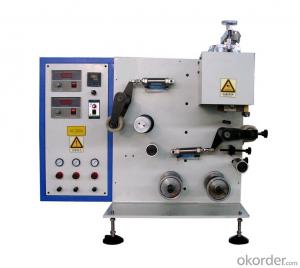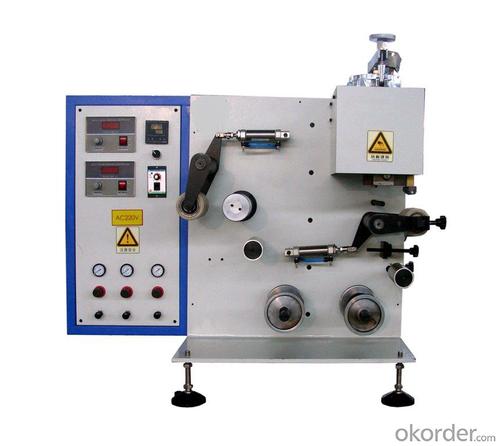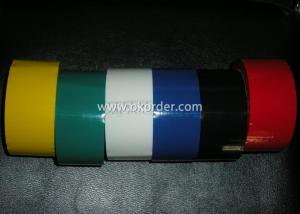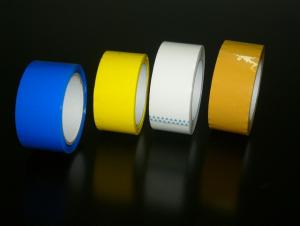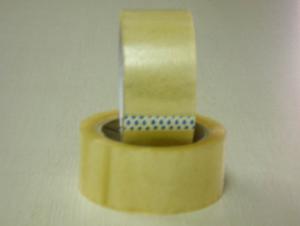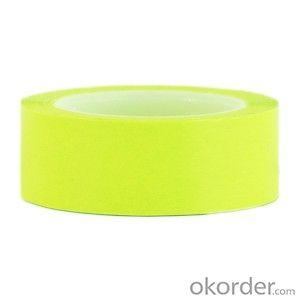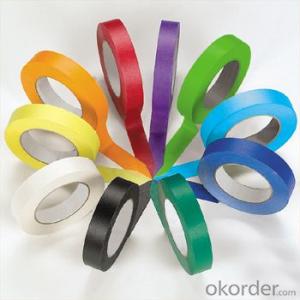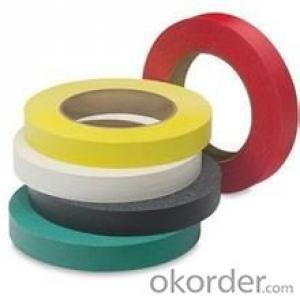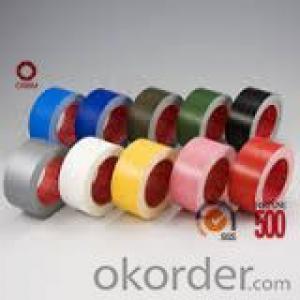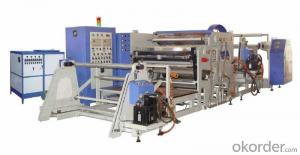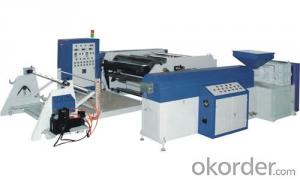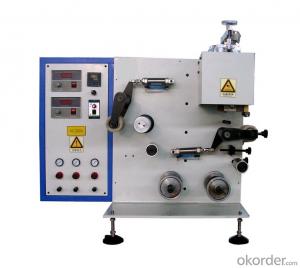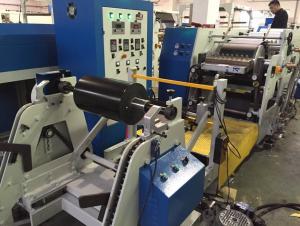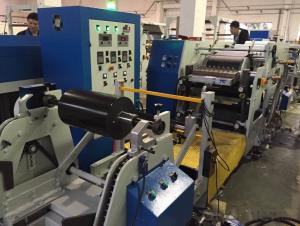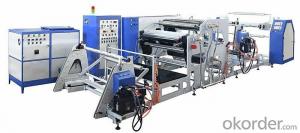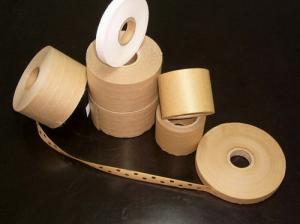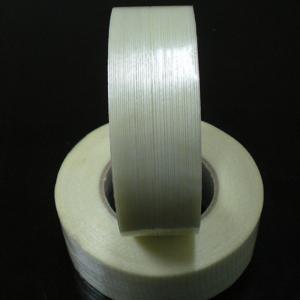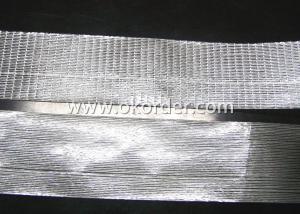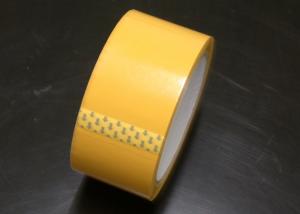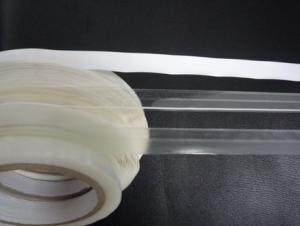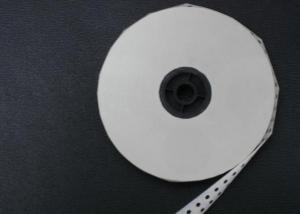Custom Printed Packaging Tape NZ Hot Melt Coating Machine for Tape Testing
- Loading Port:
- China main port
- Payment Terms:
- TT OR LC
- Min Order Qty:
- 1 unit
- Supply Capability:
- 20 unit/month
OKorder Service Pledge
OKorder Financial Service
You Might Also Like
Description of Hot Melt Coating machine for Tape Testing
Hot Melt coating machine for experimental is especially suitable for research, development of new product and small production of certain products. Whether you want to test various glues or develop new product, it will be your good assistant and it is a coating system with small investment and a good benefit. It adopts a single-arm structure for loading and unloading the materials easily and can coat the material in width of 210/300mm, so it is standard and ideal equipment for one-person operation. If equipped with tension controller of magnetic powder, it can produce with higher proficiency.
Technical Parameters of Hot Melt Coating machine for Tape Testing
Width of Roller: 240mm / 340mm
Max. Coating Width: 200mm/310mm
Max. Diameter of Base Material: 400mm /400mm
Diameter of Paper Core: 76mm
Unwinding Device: 2 sets
Rewinding Device: 1 set
Coating weight: 15-120g/m2
Max. Speed: 50m/min
Max. Power: 2.5kw / 3.6kw
Working Pressure: 0.2-0.7MPA
Length: 2600mm
Height: 1600mm/ 1600mm
Width: 1300mm/1400mm
Packaging of Hot Melt Coating machine for Tape Testing
Machine parts are packed in steamed solid cartons separately. Cartons are placed on containers flatwise and fixedly without any possible movement or shaking during sea shipping.
Picture of Application of Hot Melt Coating machine for Tape Testing
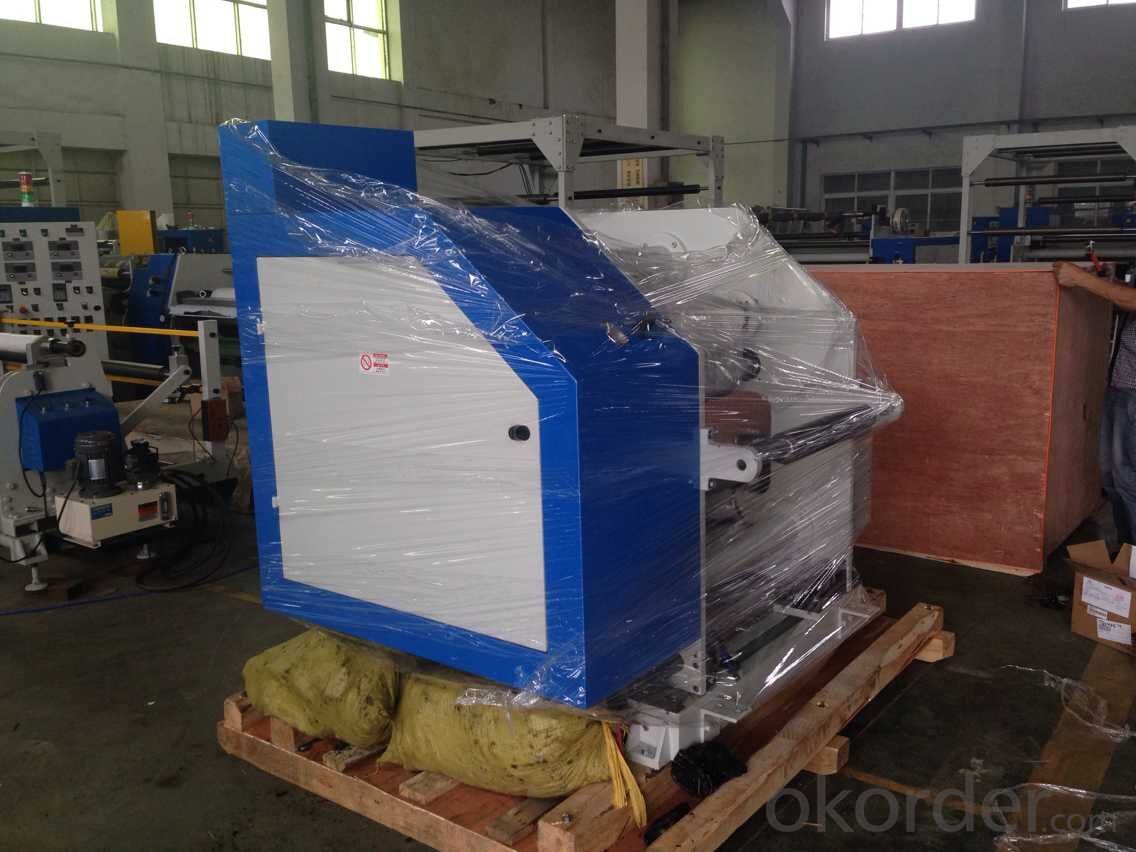
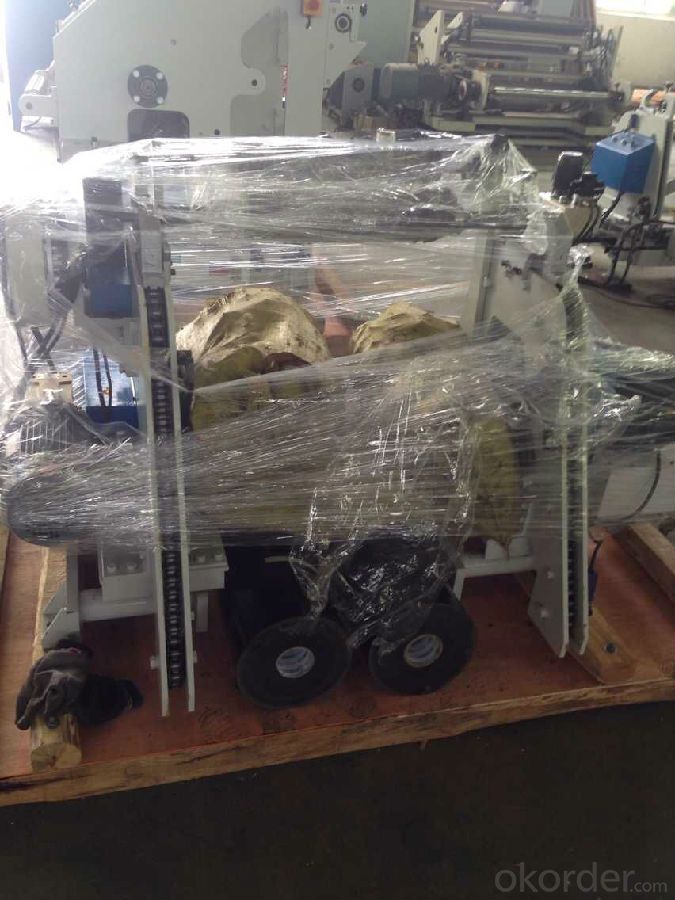
TestingFAQ: What are your company advantages?
Company Advantages:
1. Stable financial status and sound reputation as a state invested corporation under the direct administration of the State Council of PRC;
2. CNBM’s worldwide influence as one of the 500 global fortunes specializing in building materials including adhesive tapes;
3. More than a decade’s exporting experience and technology in adhesive tape industry;
4. Preferential shipping channels, with a separate team dealing with shipping.
- Q: Can packaging tape be used for bundling items together?
- Absolutely, packaging tape is perfect for bundling various items together. It serves as a reliable means to firmly secure and hold multiple objects, particularly when engaged in shipping or relocating. Engineered to possess strength and dependability, packaging tape ensures a steadfast grip that effectively keeps items tightly bundled. Frequently employed for the purpose of bundling boxes, packages, or any other items necessitating cohesion during transportation or storage.
- Q: Is packaging tape safe for use on children's toys or products?
- Packaging tape is not recommended for direct use on children's toys or products. While packaging tape is commonly used for sealing and securing packages, it is not designed or tested for contact with children's skin or for use on items that may come into direct contact with their mouths or eyes. Children's toys and products are subject to specific safety regulations and guidelines to ensure they are safe for use and do not pose any harm to children. It is important to follow the manufacturer's instructions and use appropriate materials that are specifically designed for children's toys and products, such as non-toxic adhesives or child-safe tapes, to ensure the safety of children.
- Q: Can packaging tape be used for sealing plastic food containers?
- It is advised against using packaging tape to seal plastic food containers. Although it may create a temporary seal, it is not intended for direct contact with food and may be unsafe to consume. Moreover, packaging tape does not offer an airtight seal and may fail to maintain the freshness of the food or prevent leakage. To guarantee the safety and freshness of your food, it is recommended to utilize food-grade sealing alternatives like plastic wrap, aluminum foil, or food container lids that are specifically designed for this purpose.
- Q: What materials are commonly used for packaging tape?
- Packaging tape plays a vital role in securing and sealing packages for shipping, storage, or general handling. It comes in various materials, each with its own unique features and benefits. The commonly used materials for packaging tape are as follows: 1. Polypropylene (PP): PP is widely used due to its affordability and versatility. It is a durable thermoplastic polymer that offers excellent resistance to moisture, chemicals, and UV radiation. PP tape is available in different thicknesses and can be transparent or colored. 2. Polyvinyl Chloride (PVC): PVC tape is known for its superior strength and durability. It can withstand water, chemicals, and extreme temperatures, making it suitable for different environments. PVC tape is often used for heavy-duty applications or when extra security is needed. 3. Polyester (PET): PET tape is made from a strong and durable synthetic polymer that provides excellent tensile strength and tear resistance. It is commonly used for heavy packages or in applications where high strength is crucial. PET tape is also resistant to UV radiation and moisture. 4. Paper: Paper-based packaging tape is an eco-friendly alternative to plastic tapes. It is made from renewable resources and can be recycled. While not as strong as plastic-based tapes, paper tape offers sufficient adhesion for lightweight or non-fragile packages. Moreover, it can be easily torn by hand, which is convenient for users. 5. Gummed Tape: Also known as water-activated tape or reinforced tape, gummed tape is made of kraft paper with a starch-based adhesive on one side. It requires water to activate the adhesive, creating a strong bond that is tamper-evident and resistant to tampering. Gummed tape provides a secure seal and is often used for heavy packages or in industries where security is a top priority. In summary, the choice of packaging tape material depends on specific requirements such as package weight, environmental conditions, and desired level of security.
- Q: Can packaging tape be used for sealing metal boxes?
- Indeed, metal boxes can be sealed using packaging tape. Specifically engineered to create a secure and long-lasting seal on different surfaces, such as metal, packaging tape possesses a powerful adhesive that effectively adheres to metal, guaranteeing that the box stays sealed throughout storage or transportation. Nevertheless, it is crucial to select a packaging tape appropriate for demanding tasks, capable of enduring the weight and pressure that the metal box may experience. Furthermore, it is advised to cleanse the metal surface prior to applying the tape to ensure optimal adhesion.
- Q: Are there any specific instructions for reusing packaging tape?
- Yes, there are some specific instructions for reusing packaging tape. Here are a few guidelines to follow: 1. Carefully remove the tape from the package: When you receive a package, try to remove the tape as gently as possible to avoid tearing or damaging it. 2. Clean the tape: If the tape has any dirt, dust, or residue on it, you can clean it by wiping it gently with a damp cloth. Make sure to let it dry completely before reusing. 3. Check the adhesive strength: Before reusing the tape, check if the adhesive is still strong enough to hold securely. If it has lost its stickiness or if it is damaged, it is recommended to discard it and use a new piece of tape. 4. Store the tape properly: To keep the tape in good condition for future use, store it in a cool, dry place away from direct sunlight. This will help prevent it from drying out or becoming brittle. 5. Use it for light to medium-duty tasks: Reused packaging tape may not be as strong as new tape, so it is best suited for light to medium-duty tasks. Avoid using it for heavy items or applications where a stronger adhesive is required. Remember, while reusing packaging tape is a great way to reduce waste, it is important to prioritize functionality and security. If the tape is damaged or loses its adhesive strength, it is best to replace it with a new piece to ensure your package is properly sealed.
- Q: What are the common price ranges for packaging tape?
- The common price ranges for packaging tape vary depending on the type, brand, and quantity of tape being purchased. On average, basic packaging tape can range from $2 to $10 per roll, with lower quality or smaller rolls being on the lower end of the price range. Mid-range packaging tapes, which may offer better durability or adhesive strength, can cost between $5 and $20 per roll. Premium or heavy-duty packaging tapes, often used for industrial or professional purposes, can range from $10 to $30 per roll. Bulk packaging tape options, such as packs of multiple rolls, are also available and may offer slightly discounted prices. It is important to consider the specific requirements of your packaging needs and compare prices from different suppliers to find the best deal.
- Q: What are the considerations for using packaging tape on fragile items like glassware?
- There are several important factors to keep in mind when using packaging tape on fragile items like glassware. Firstly, it is essential to select the appropriate packaging tape. It is recommended to choose a tape specifically designed for fragile items, such as tape with reinforced fibers or tape labeled as "fragile" or "glassware" tape. These types of tapes are typically stronger and more durable, offering better protection for delicate items. Secondly, it is advisable to apply multiple layers of tape to the packaging. Adding extra layers of tape can enhance the strength and stability of the packaging, reducing the chances of damage during transit or handling. However, it is important to be cautious not to go overboard, as excessive tape can make it challenging to open the package without causing harm to the contents. Another consideration is the technique used to apply the tape. It is crucial to secure the tape tightly and evenly across the package, ensuring it adheres firmly to all sides. This will help prevent any shifting or movement of the glassware inside the packaging, minimizing the risk of breakage. Additionally, it is recommended to provide additional cushioning and protection for the fragile items. This can be achieved by using materials such as bubble wrap, foam inserts, or other suitable packaging materials. These extra layers of protection will absorb shocks and impacts, reducing the risk of damage to the glassware. Lastly, it is crucial to clearly label the package as fragile. Make sure to prominently mark the package with the word "fragile" or use fragile stickers to alert handlers and delivery personnel to exercise extra care when handling the package. This will ensure that the fragile items are treated with the necessary caution throughout the shipping and delivery process. By considering these factors and taking appropriate precautions, the use of packaging tape on fragile items like glassware can provide the necessary protection and minimize the risk of damage during transit or handling.
- Q: Can packaging tape be used for securing cables or cords?
- Yes, packaging tape can be used for securing cables or cords. While it may not be the most ideal choice, especially for long-term or heavy-duty applications, packaging tape can temporarily secure cables or cords together. It can help prevent them from tangling or getting in the way, especially during transportation or storage. However, it is important to note that packaging tape is not designed specifically for cable management, and as such, it may not provide the same level of durability or flexibility as specialized cable ties or straps. For more permanent or heavy-duty cable management, it is recommended to use products specifically designed for that purpose.
- Q: Does packaging tape come in different adhesion levels for various surfaces?
- Yes, packaging tape does come in different adhesion levels for various surfaces. There are different types of packaging tapes available in the market, each designed to adhere to specific surfaces. For example, there are packaging tapes with low adhesion levels that are ideal for delicate surfaces such as paper or cardboard, as they provide a secure bond without damaging the surface when removed. On the other hand, there are high adhesion packaging tapes that are specifically formulated for sticking to rough or uneven surfaces, such as plastic or metal. These tapes have a stronger adhesive to ensure a secure hold in challenging environments. Additionally, there are also packaging tapes with medium adhesion levels that are versatile and suitable for general-purpose usage on a variety of surfaces. The different adhesion levels allow users to choose the most appropriate packaging tape based on the specific surface they need to adhere to, ensuring optimal performance and reliability.
Send your message to us
Custom Printed Packaging Tape NZ Hot Melt Coating Machine for Tape Testing
- Loading Port:
- China main port
- Payment Terms:
- TT OR LC
- Min Order Qty:
- 1 unit
- Supply Capability:
- 20 unit/month
OKorder Service Pledge
OKorder Financial Service
Similar products
Hot products
Hot Searches
